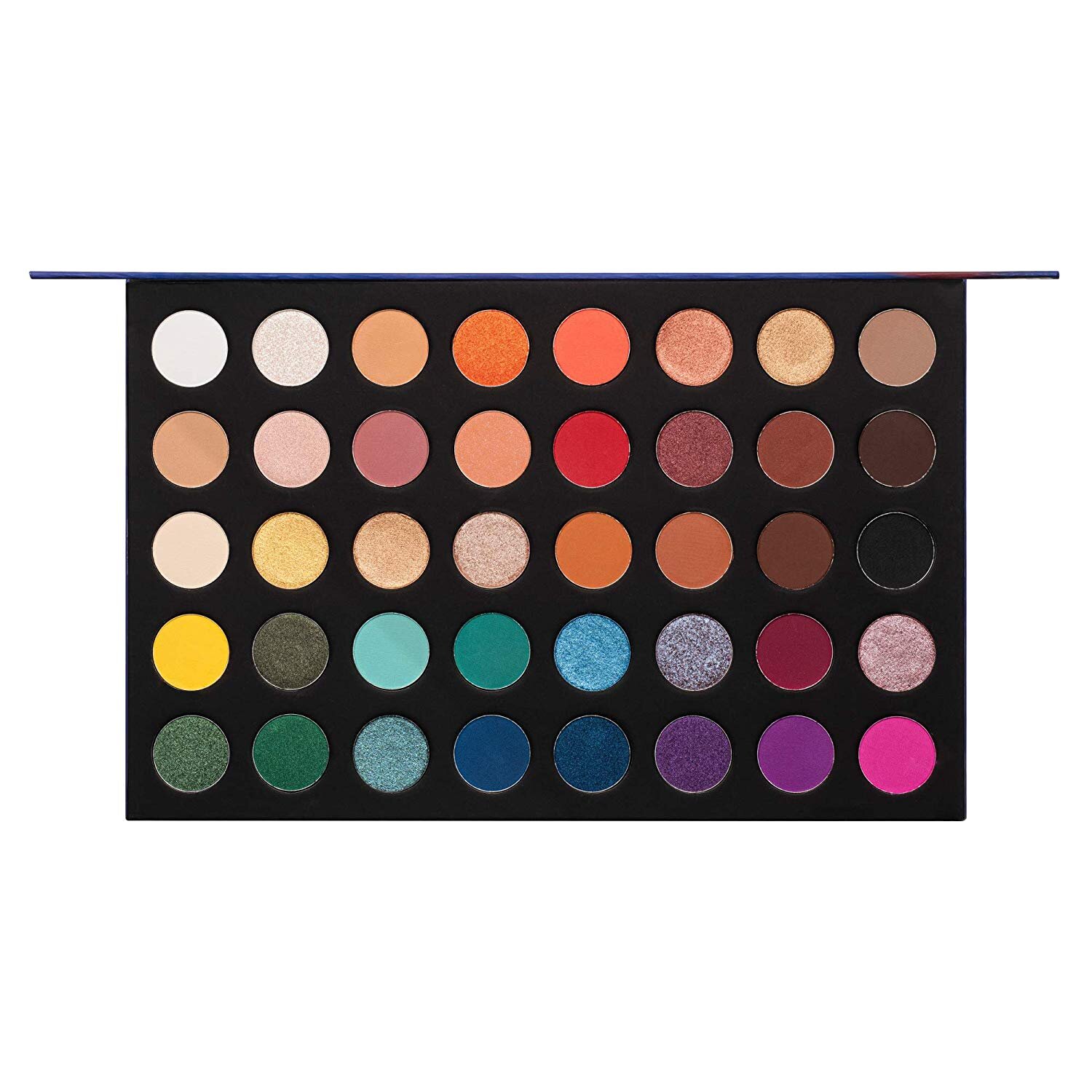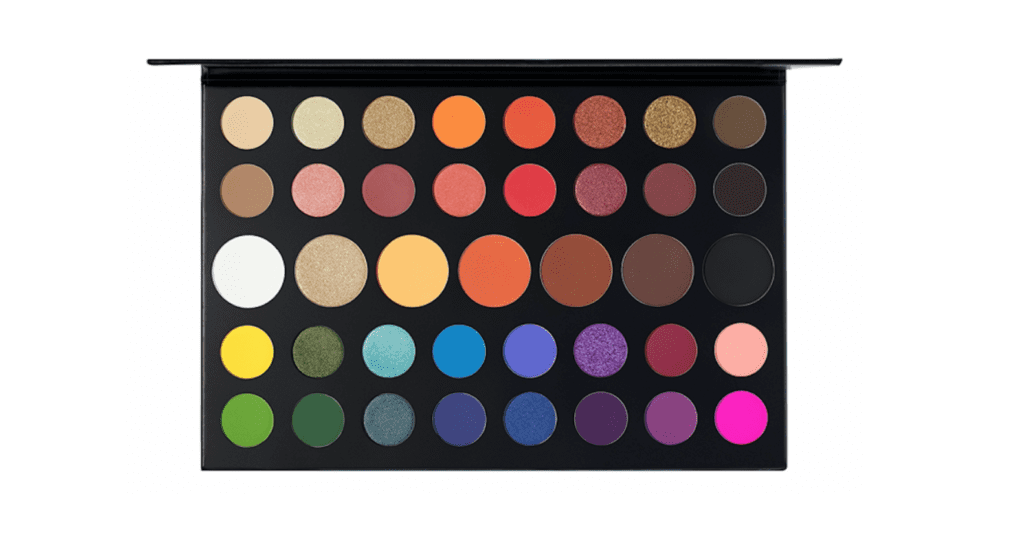Beauty influencer James Charles has called out Wet n Wild for allegedly copying his eponymous eyeshadow palette by way of one of its own soon-to-launch products. According to tweets that Charles posted over the weekend, drug store beauty brand Wet n Wild copied “the exact shades and layout” from the $39 James Charles Palette he launched last year with beauty brand Morphe for its new 40 Palette – a reference to the 40 different shades of eyeshadow that are included in the palette, one more than James own 39-shade offering.
20-year old Charles, who first made his name by way of his YouTube channel, stated that “there are only so many colors you can put into an eyeshadow palette” and noted that he is “not claiming to ‘own’ specific colors.” Yet, due to the unmistakable similarities at play, it is clear that Los Angeles-based Wet n Wild copied his palette, he argued.
According to CNN, the 40-year old affordable beauty brand “responded to [the] copycat complaints by pointing to a common beauty industry practice known as dupes — cheaper, comparable alternatives to more expensive makeup.”
Just as in the fashion industry, where the replication of higher-priced brands’ wares is an industry all of its own, the beauty market is becoming increasingly rife with “dupes.” Far from a little-known practice, dupes – or cheaper alternatives to higher-end beauty products – have become a mainstay of the $532 billion beauty industry. Mass-market beauty brands, capitalizing on consumer enthusiasm for affordable cosmetics and beauty goods, are offering products with the same characteristics or qualities as the popular products of their higher-end counterparts – from less expensive versions of Glossier’s hot-selling Boy Brow grooming pomade to copycat takes on Drunk Elephant’s C-Firma Day Serum.
All the while, the dupes phenomenon has spawned a seemingly countless amount of blog posts and YouTube videos comparing products from brands like Glossier, Nars, and Yves Saint Laurent to similar ones from more budget-friendly brands, such as Revlon, Maybelline and E.L.F. There are even dupe-specific Instagram accounts, such as @dupethat, which provides its 1.2 million followers with dupes of makeup, haircare, skincare and other beauty-related products.
The concerns of brands when it comes to these replica products – including their potential inability to recoup of R&D costs by way of sales as a result of such lower priced alternatives, and the risk that consumers may be confused as to the source of a dupe, particularly when a product’s packaging is knocked off – paired with the ethical issues that come hand-in-hand with copying, which are often raised by consumers in light of a larger call-out culture, raise questions about the legality of the widespread practice of beauty product duping. As such, the question is: are dupes legal?
 Wet n Wild’s palette
Wet n Wild’s palette
In many cases, dupes are legally on the up-and-up, as long as the elements of the original products are not protectable and/or the replicated products do not cross the line between inspiration and infringement. Legally acceptable dupes are not uncommon since neither the design of standard makeup palettes, for example, nor the idea of a tube of lipstick or a generic pink blush are protected by law. Moreover, brand owners certainly cannot initiate trademark proceedings over a rival’s use of descriptive terms, such as “nude,” “highlight,” or “shine” — which are some of most commonly used cosmetics terms.
That does not mean that brand owners are entirely without recourse when they are ripped off, though. Causes of action may arise when these dupe-offering companies re-create their packaging, as the appearance of product packaging falls within the bounds of trade dress or design patent protection. So, when the distinctive, non-functional design elements of a makeup compact, for instance, are replicated, that could give rise to trade dress infringement claims, but only if consumers are likely to link the appearance of the compact to a single beauty brand in the same way as they associate a brand name or logo with a single company.
Design patent claims could arise if the ornamental features of a product, such as the layout of an eyeshadow palette, are protectable, which is not unheard of, as the bar for design patent protection can be quite low.
Still yet, in some cases, such as the one that Charlotte Tilbury filed against British company Aldi (and won), copyright infringement claims are in play connection with dupes, as are patent claims if/when a specific formula is replicated.
As for whether James Charles has a case against Wet n Wild, it seems unlikely. He very well may enjoy some copyright protection for the specific arrangement of colors embodied in his eponymous palette, since “the technical standard is so low that almost everything can be protected,” Brian Frye, an intellectual property professor at UK College of Law, told TFL. There is, however, a draw back here. Any protection that Charles may enjoy is almost certainly extremely thin since the level of originality is low; the basic layout of eyeshadows in a palette is hardly an enormously creative endeavor.
Not only is there likely limited protection at play, the differences between the two products could prove detrimental. Charles has claimed that his larger rival replicated “the exact shades and layout” of his palette. However, there are, in fact, differences to be found here, including variations in the colors, themselves, and differences in terms of the two brands’ eyeshadow layouts within the palettes. Charles’ palette, for instance, includes a center row in which the eyeshadow swatches are larger than the surrounding rows. Meanwhile, Wet n Wild’s palette consists exclusively of uniform-sized eyeshadow circles.
With such differences in mind, Frye says that the copying at play can be more accurately described as Wet n Wild using “nearly identical colors in a nearly identical way,” or in other words, “different,” a reality that bodes well for Wet n Wild and consumers in search of low cost beauty goods but not for Charles or other brands that may find themselves in similar situations.
UPDATED (November 29, 2019): Interestingly enough, Morphe has been issued a design patent (and 15 years of protection) for the palette at issue, which the recently-issued patent documentation describes as the “ornamental design of a cosmetic palette.” The brand has now since filed suit against Wet n’ Wild on Charles’ behalf, though.














